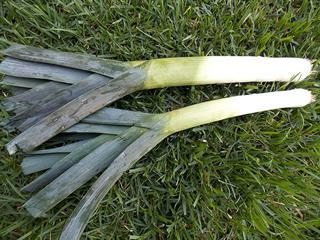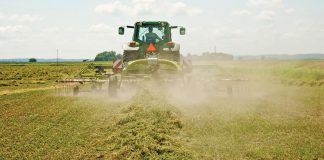
As a member of the onion family, the leek shares many of the same pests, diseases and production principles. There are, however, some important differences.
In South Africa, leeks are generally seen as a soup ingredient. The demand for leeks therefore peaks in winter, and leek producers should take this into account when planting.
Leeks have a major advantage over onions in that they do not reach marketable maturity at a certain stage. Instead, they can be used from the time they are relatively young. In soup packs, which accounts for a big part of the market share, leeks are cut to size regardless of length and diameter to conform to the size and shape of the soup pack.
This allows a grower to plant leeks at a certain time and then harvest them over many months according to the weekly demand, which often increases substantially during cold fronts.
This said, the crop takes a long time to reach the most popular size and farmers who are new togrowing leeks can get caught out by planting too late. The lesson? Plant your leeks in the heat of summer when you’re not thinking of a winter crop.
Various planting options
There are several planting options. Direct seeding is occasionally practised, but the seeding is done in November or December when temperatures are very hot, thunderstorms a possibility and weeds grow at their fastest rate. Weed killers are tricky with direct seeding and the seedlings take a long time before they are well on their way.
In short, direct seeding ties up land for an extra couple of months, does not make for efficient use of water and is certainly not for beginners. A better alternative is to use seedlings. Here, you can either get a seedling grower to produce seedlings or make your own seedbeds. If you’re starting off, the professional seedling grower is perhaps the safest option.
There will be a few seedlings in each plug which are separated at planting. This makes producing them cheaper. The seedlings will be smaller than preferred with seedbeds as it is impractical to produce pencil-thickness plants in a seedling tray.
If you wish to make your own seedbeds, plant the seedlings in rows across the beds leaving a gap that can accommodate a thin hoe for easier weed control. The seeds can be spaced about 5mm apart in the rows. You will be more successful if the seedbeds can be covered with netting in the early stages.
Fertiliser
Application of fertiliser will depend on what’s in the soil. If the soil is poor, add a handful of 2:3:3:4 or 2:3:2 per square metre, worked in. Cattle manure is also a good option, but be careful not to overdo it. During growth, LAN should be applied a couple of times or as indicated if plants become a lighter colour.
It will take at least two months for the seedlings to reach pencil thickness, but you can let them get bigger with no ill-effect.
Before transplanting, trim the leaves to make handling easier and to ensure that the root system does not have to struggle to maintain a large leaf area. Plant in rows about 30cm apart with a spacing of 6cm to 8cm in the row. Plant as deeply as possible to increase the length of white shanks.
The bigger the seedlings, the deeper you can plant.












